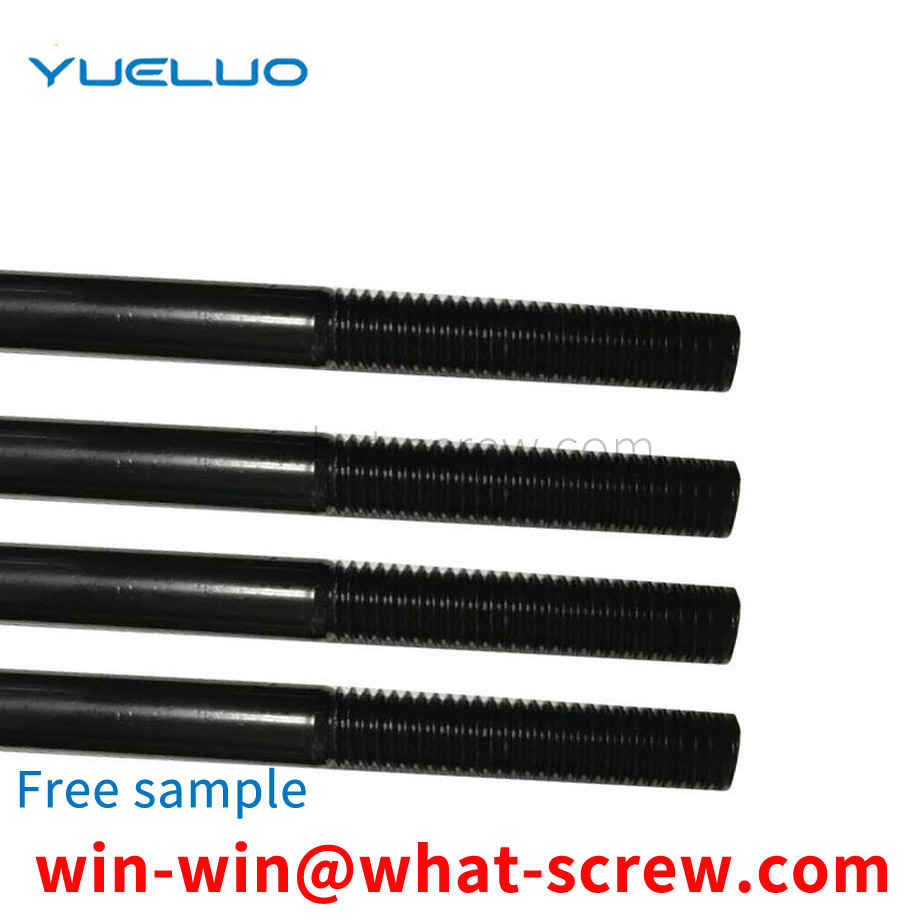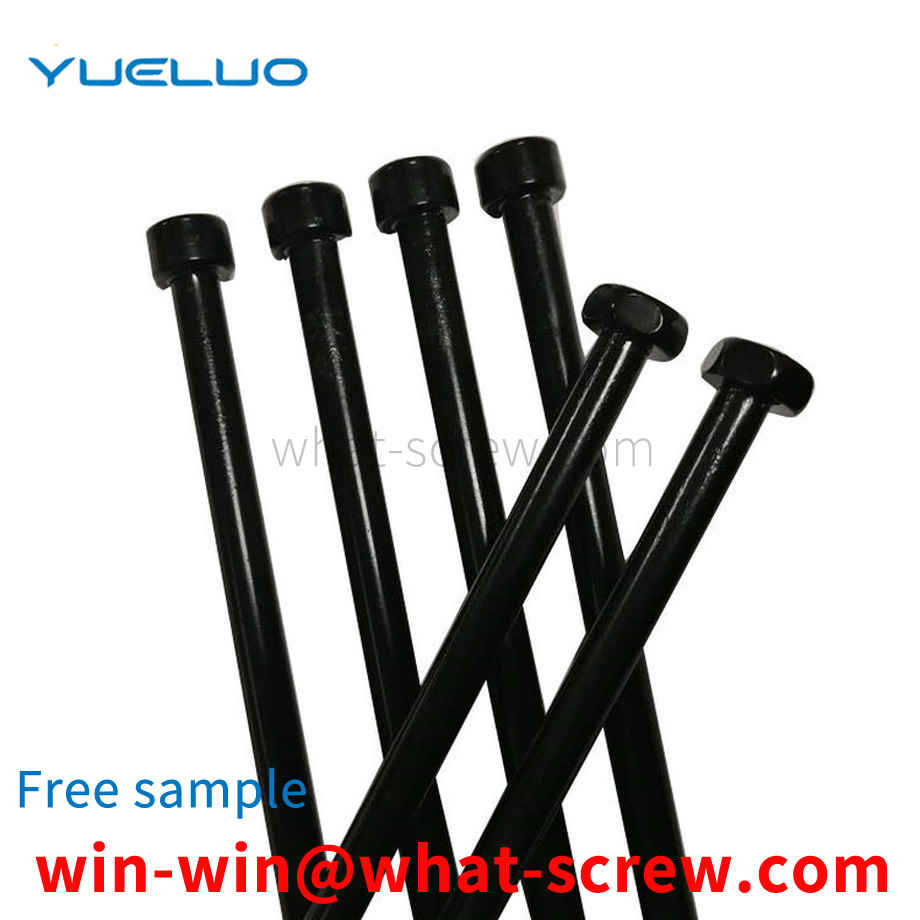The profile of the American National thread (60 profile angle and H/8 flatness) is different from the Wyeth thread profile (55 profile angle and H/6 flattening height). American National Thread is widely used in regions and industries that are influenced by American industry. In World War II, due to the inconsistent thread standards used by the Allies, the logistical supply difficulties caused serious economic losses and casualties to the Allies. Immediately after the end of World War II, the United States, the United Kingdom, Canada and other allies immediately began to formulate a unified thread standard among allied countries, and promulgated a unified thread standard in 1948. Because the economic strength and military strength of the United States dominated the Allied forces at that time, the unified thread was mainly formulated according to the national thread standard of the United States. Unity; the latter letter N is derived from the N designation for American National Threads. Since then, the unified thread began to squeeze the original use market of the British Whitworth thread.
Now people often use spring washers to lock nuts and bolts, spring washers, generally stainless steel and carbon steel non-closed spiral washers, under the nut, above the flat washer, increase the friction between the nut and the bolt, used to prevent The loosening of the nut plays a role in preventing vibration and loosening, but it is often due to a radial external tension, which is caused by the tightening axial force generated by the tightening torque, and the phenomenon of open ring expansion occurs, and the hydrogen embrittlement of the spring washer often occurs. The pressure is unevenly applied to the flat washer through the spring washer, and the friction coefficient between the spring washer and the nut and the flat washer is small, resulting in vibration, rotation and relaxation.
The cylindrical pin is mainly used for positioning and can also be used for connection. It is fixed in the pin hole by means of interference fit. Cylindrical pins used for positioning are usually not subject to load or a small load, the number is not less than two, distributed in the symmetrical direction of the overall structure of the connected parts, the farther the better, the pin is in each connected part The length is about 1-2 times the minor diameter. Cylindrical pins can also be used as shafts, and a straight shaft can also be used as cylindrical pins or even centering pins. So what's the difference between a shaft and a pin? The shaft can be used to transmit torque, bear bending moment and torque, and the cylindrical pin can be used for positioning, bear extrusion force and shear force. In a sense (such as small equipment), cylindrical pins can also be used as shafts.
1. The twisted screw should be considered according to the actual inner diameter of the barrel, and the outer diameter deviation of the new screw should be given according to the normal clearance with the barrel. 2. After the thread surface with the reduced diameter of the worn screw is treated, the wear-resistant tungsten carbide alloy is thermally sprayed, and then ground to size. 3. Surfacing wear-resistant tungsten carbide alloy on the thread part of the worn screw. According to the degree of screw wear, surfacing welding is 1~2mm thick, and then the screw is ground and processed to size. This wear-resistant tungsten carbide alloy is composed of materials such as C, Cr, Vi, Co, W and B, which increases the wear resistance and corrosion resistance of the screw. 4. The bottom diameter of the screw is repaired by electroplating hard chromium. Chromium is also a wear-resistant and corrosion-resistant metal, but the hard chromium layer is easier to fall off.
Installation method broadcast 1. One-time burying method: When pouring concrete, bury the anchor bolts. When the high tower is controlled by overturning, the anchor bolt should be buried once. 2. Reserved hole method: The equipment is in place, the holes are cleaned, the anchor bolts are placed in the holes, the equipment is positioned and aligned, and then poured with non-shrinkage fine stone concrete that is one level higher than the original foundation, and compacted and compacted. . The distance from the center of the anchor bolt once buried to the edge of the foundation should not be less than 2d (d is the diameter of the anchor bolt), and should not be less than 15mm (d≤20, it should not be less than 10mm), not less than half the width of the anchor plate Add 50mm, when the above requirements cannot be met, appropriate measures should be taken to strengthen it. The diameter of the anchor bolts used for the structure should not be less than 20mm. When subjected to earthquake action, double nuts should be used for fixing, or other measures to effectively prevent loosening should be adopted, but the anchorage length of anchor bolts should be increased by 5d compared with the anchorage length of non-seismic action. Installation planning of anchor bolts Treatment of anchor bolts loose in the foundation When the anchor bolts are tightened, the bolts may be pulled out. At this time, the bolts should be adjusted to their original positions, and the foundation around the bolts should be shoveled out enough. , and then weld two U-shaped steel bars vertically and horizontally on the bolts, and finally clean the pit with water and grouting, and then tighten the live anchor bolts after the concrete has solidified to the design strength. The treatment method of the live anchor bolt deviation is roughly the same as the dead ground. The method for the anchor bolts is the same, except that the anchor bolts can be pulled out for processing. If the bolt is too long, a section of the thread can be cut off on the machine tool; if the bolt is too short, it can be extended by hot forging; if the position is inconsistent, it can be corrected by bending. Application industry: suitable for various equipment fixing, steel structure foundation embedded parts, street lights, traffic signs, pump, boiler installation, heavy equipment embedded fixing, etc.
We have many years of experience in the production and sales of screws, nuts, flat washers, etc. The main products are: DIN928 nuts, anti-loose flange nuts, accessories table and chair bolts, hand screws and other products, we can provide you with suitable fasteners solution.



















 Service Hotline
Service Hotline




